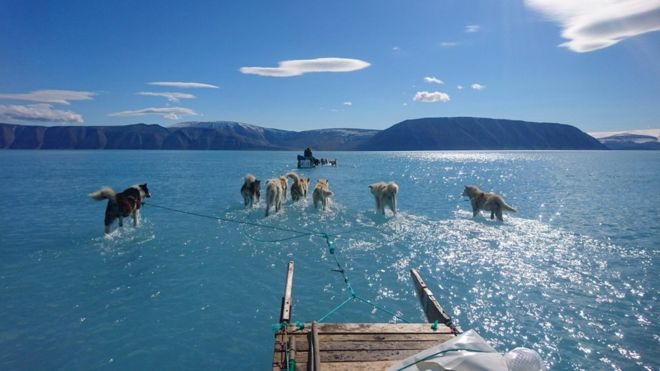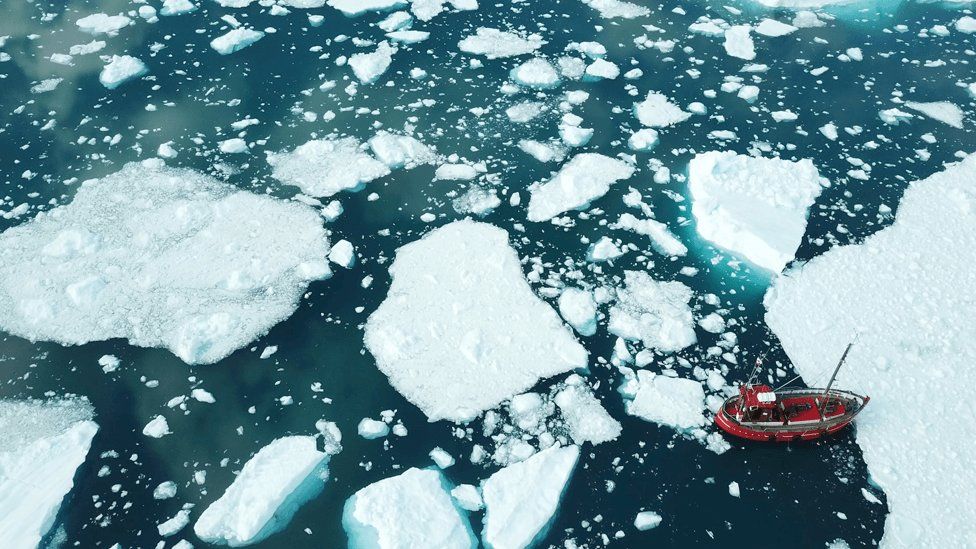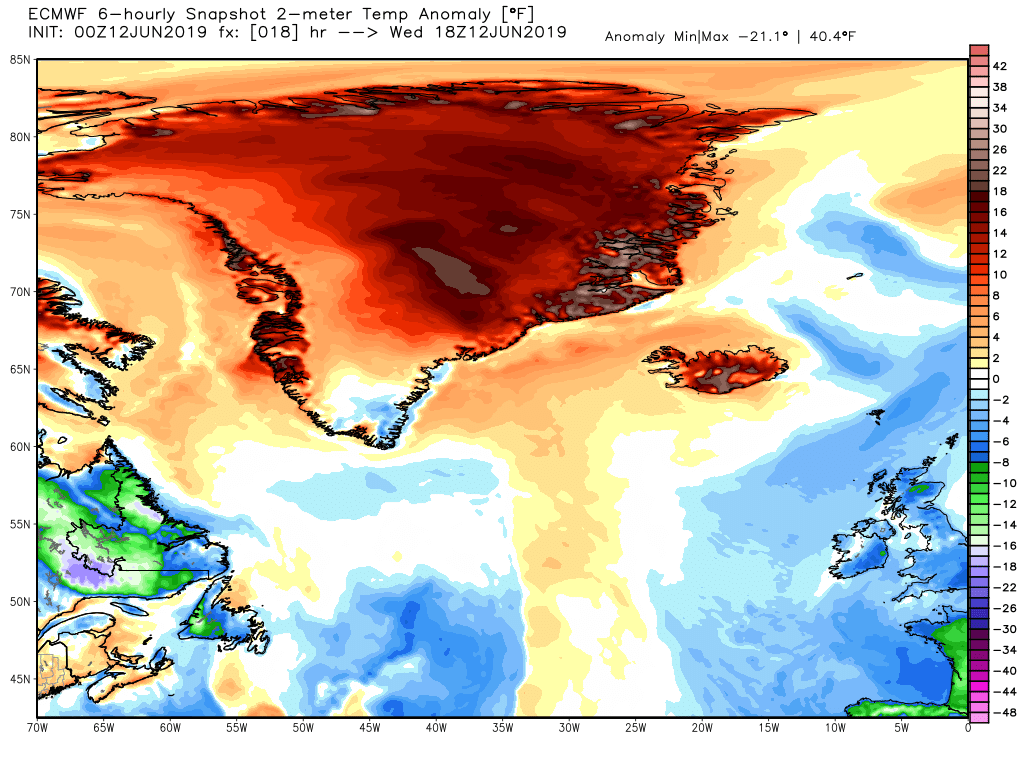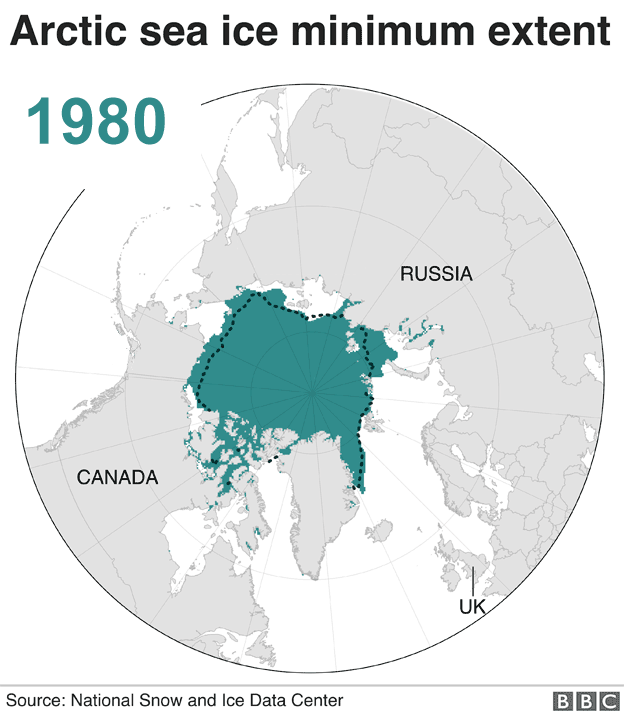Published Aug 2019
Greenland's ice sheet just lost 11 billion tons of ice -- in one day. After months of record temperatures, scientists say Greenland's ice sheet experienced its biggest melt of the summer on Thursday, losing 11 billion tons of surface ice to the ocean -- equivalent to 4.4 million Olympic swimming pools.
Greenland's ice sheet usually melts during the summer, but the melt season typically begins around the end of May; this year it began at the start. It has been melting "persistently" over the past four months, which have recorded all time temperature highs, according to Ruth Mottram, a climate scientist with Danish Meteorological Institute.
This July alone, Greenland's ice sheet lost 197 billion tons of ice -- the equivalent of around 80 million Olympic swimming pools -- according to Mottram. She told CNN the expected average would be between 60-70 billion tons at this time of year.
The weather conditions that brought a heat wave to Europe last week have reached the Arctic, where scientists say they could trigger one of Greenland's biggest ice melts.
Scientists recorded unconfirmed temperatures of 2.7C at 3,000 meters above sea level, which would be a new record if confirmed.
It came on the same day as meteorologists reported that globally, this July has been the hottest month in recorded history.

Where sled dogs raced across ice, they now slosh their way through water

Researchers say they're "astounded" by the acceleration in melting and fear for the future of cities on coasts around the world. The ice sheet stores so much frozen water that if the whole thing melted, it would raise sea levels worldwide by up to 7m.
 European weather model showed temperature over parts of Greenland peaked at 40 DEGREES above normal in June.
Melting observed on 45% of Greenland ice sheet that day, a record so early in season.
European weather model showed temperature over parts of Greenland peaked at 40 DEGREES above normal in June.
Melting observed on 45% of Greenland ice sheet that day, a record so early in season.
Greenland ice sheet
The Greenland ice sheet is a vast body of ice covering 1,710,000 square kilometres, roughly 80% of the surface of Greenland. It is the second largest ice body in the world, after the Antarctic ice sheet. The ice sheet is almost 2,400 kilometres long in a north-south direction, and its greatest width is 1,100 kilometres at a latitude of 77°N, near its northern margin. The mean altitude of the ice is 2,135 metres. The thickness is generally more than 2 km and over 3 km at its thickest point. In addition to the large ice sheet, isolated glaciers and small ice caps cover between 76,000 and 100,000 square kilometres around the periphery. If the entire 2,850,000 cubic kilometres of ice were to melt, it would lead to a global sea level rise of 7.2 m. The Greenland Ice Sheet is sometimes referred to under the term inland ice, or its Danish equivalent, indlandsis. It is also sometimes referred to as an ice cap.
Area: 1.710 million km²
Length: 2,400 km
Thickness: 3,000 m



No comments:
Post a Comment